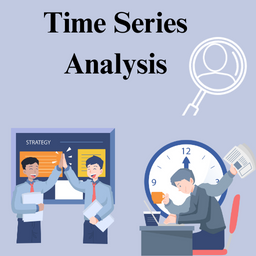The Time Series Analysis In Health Care System. Time series analysis is a statistical method for examining data points collected sequentially over time, with the goal of identifying patterns, trends, and forecasting future values. It’s used to understand how a variable changes over time and how it relates to other variables within the same period.
Introduction to Time Series Analysis In Health Care
Time series analysis is a fundamental method used to describe and analyze changes in human responses and behaviors over time. This approach is particularly valuable in nursing and healthcare where many phenomena are closely related to time, such as cyclical patterns and periodic or systematic variances. Time series statistical models are crucial for conducting longitudinal studies that examine intra-individual differences in the rates and patterns of change.
Comparison to Inferential Statistics
Time series analysis diverges significantly from traditional inferential statistical models, which typically analyze aggregate data to generalize about changes in human behavior. Instead, time series analysis focuses on individual patterns of change to forecast future behavior. In this context, each subject—whether an individual, a family, a community, or an entire health care system—is treated as a unique system or entity. This entity’s behavioral state is isolated and measured at specific points in time, offering a detailed view of changes over a specified period.
For example, in nursing research, subjects of time series analysis might range from an individual’s cardiovascular response to stressors to broader systems like health care institutions or even political entities. This method allows for a nuanced understanding of how specific interventions or changes impact subjects over time.
Characteristics of Time Series Analysis
A key characteristic of time series analysis is the inherent temporal component of the data. The behavior or state being studied is expected to vary in a predictable manner over time. However, time itself is not manipulated as an independent variable; rather, it serves as a necessary temporal frame or marker within the study.
Time series analysis can be either univariate, involving a single sequence of data points over time, or multivariate, which explores relationships between two or more sequences of data points. In each case, these data points are not independent but are highly correlated with one another, meaning that each observation is contextually tied to its predecessors and successors within the series.
This methodological approach contrasts with inferential statistical models where data points are typically viewed as independent of one another. In time series analysis, the predictive power of the study does not depend solely on the sample size. Instead, it hinges on accurately hypothesizing the internal temporal structure of the phenomenon, selecting an appropriate sampling time window that captures multiple expressions of change, and identifying a sampling frequency that adequately captures all critical phases of the pattern being studied.
Application and Relevance in Nursing
While the dynamic nature of human behavior is a central interest in nursing science, employing statistical time series models is not always appropriate or feasible due to their complexity and cost. However, when applicable, time series analysis provides deep insights into trends, cycles, and patterns of change within a predictable timeframe. This can be particularly impactful in healthcare, where understanding the temporal effects of medical interventions, policy changes, or environmental shifts on patient outcomes can inform better practice and policy decisions.
For instance, time series analysis can be used to study the effects of a new treatment regimen over time, analyzing how patient outcomes evolve in response to the treatment and identifying any potential delayed effects or long-term consequences. Similarly, it can track changes in community health metrics following the introduction of public health initiatives or changes in healthcare legislation.
Conclusion
In conclusion, time series analysis offers a robust framework for analyzing changes over time in the field of nursing and healthcare. By focusing on individual patterns of change and considering the temporal correlations between observations, this approach allows researchers and practitioners to gain a deeper understanding of the dynamics at play. As such, time series analysis is invaluable for advancing nursing practice and healthcare policy, providing the evidence base needed to support effective and timely decision-making in an ever-evolving healthcare landscape.
Read More:
https://nurseseducator.com/didactic-and-dialectic-teaching-rationale-for-team-based-learning/
https://nurseseducator.com/high-fidelity-simulation-use-in-nursing-education/
First NCLEX Exam Center In Pakistan From Lahore (Mall of Lahore) to the Global Nursing
Categories of Journals: W, X, Y and Z Category Journal In Nursing Education
AI in Healthcare Content Creation: A Double-Edged Sword and Scary
Social Links:
https://www.facebook.com/nurseseducator/
https://www.instagram.com/nurseseducator/
